Best 2FA Browser Automation Tools for Enterprise Workflows (November 2025)
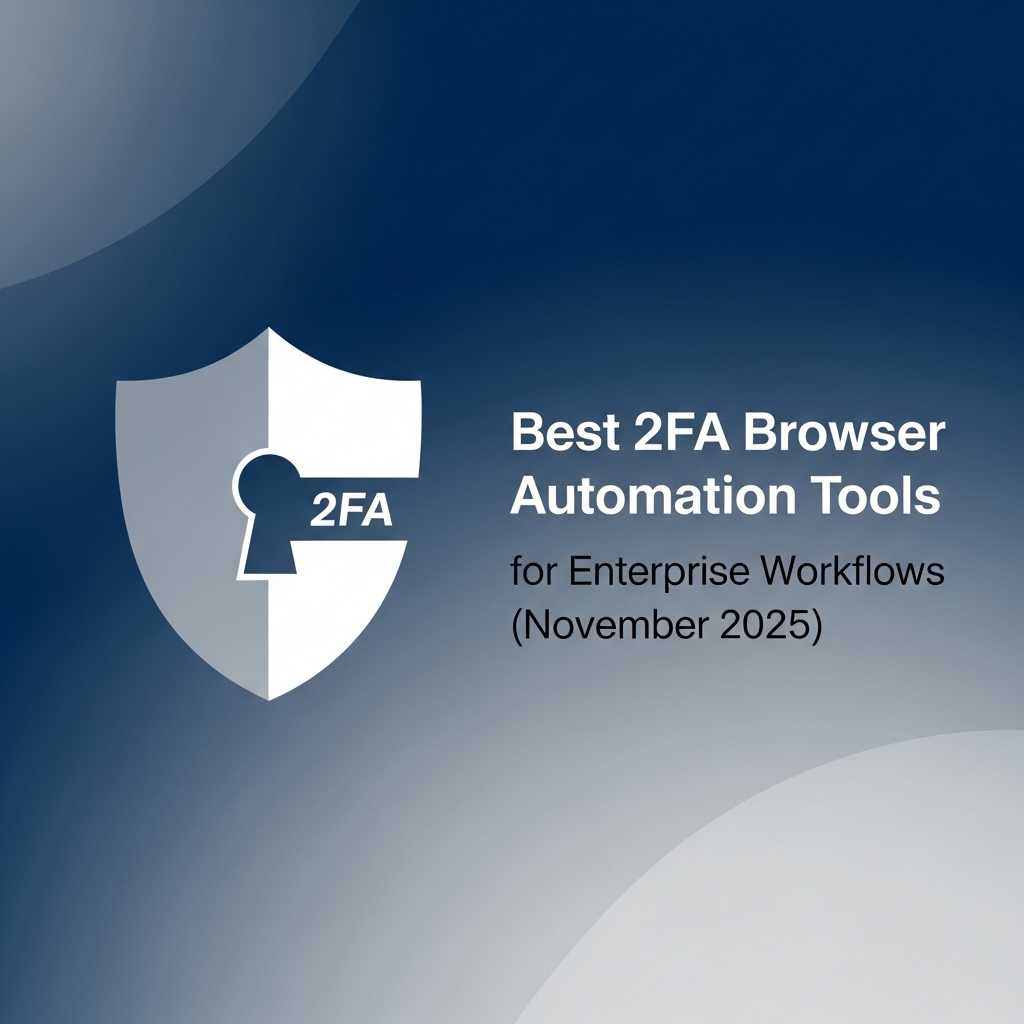
Automating through 2FA used to mean writing custom code for every single site. You'd extract secrets manually, maintain TOTP libraries, and pray nothing broke when a vendor updated their login page. TOTP browser automation tools have gotten better, but not all of them handle the complexity of real-world authentication flows. We tested the options available in November 2025 to see which ones actually scale.
TLDR:
- 2FA automation eliminates manual login interruptions across multiple vendor portals
- Traditional tools like Playwright require manual secret extraction for each website
- Native TOTP support and AI-powered authentication work without site-specific configuration
- Skyvern combines 2FA, CAPTCHA solving, and proxy support in one API without external services
What is 2FA Browser Automation?
2FA browser automation refers to tools that can authenticate and navigate websites protected by two-factor authentication without manual intervention. If you need to download invoices from 50 vendor portals daily, and each requires 2FA, that's 50 manual interruptions. With 87% of companies with over 10,000 employees using MFA, enterprise authentication bottlenecks are widespread, and enterprise browser automation costs add up quickly without the right solution.
2FA-compatible automation eliminates these bottlenecks while maintaining security compliance. Traditional automation scripts fail when they encounter TOTP codes, SMS verifications, or authenticator app prompts, which is why many teams evaluate free browser automation tools before committing to paid solutions.
These specialized tools integrate directly with authentication protocols to handle multi-factor challenges programmatically. They can retrieve time-based one-time passwords from authenticator services, process verification codes, and complete security workflows that would otherwise require human interaction at each login.
How We Ranked 2FA-Compatible Browser Automation Tools
We looked at each tool based on five core criteria for production 2FA automation:
- Native TOTP Integration. Does the tool include built-in support for time-based one-time passwords, or does it require external workarounds and custom code?
- Authentication Handling Sophistication. Can it manage multiple authentication methods (authenticator apps, SMS codes, backup codes) and adapt to different security implementations across websites?
- Enterprise Security Features. Does it provide audit trails, credential management, proxy support, and compliance capabilities that enterprise security teams require?
- Ease of Implementation. How quickly can developers deploy 2FA automation without extensive configuration, and does it work across websites with different layouts without customization?
- Scalability Across Multiple Websites. Can a single workflow handle authentication across numerous sites with varying 2FA implementations, or does each site require separate configuration?
We reviewed publicly available documentation, feature specifications, and deployment architectures to assess each tool against these criteria.
Best Overall 2FA-Compatible Browser Automation Tool: Skyvern
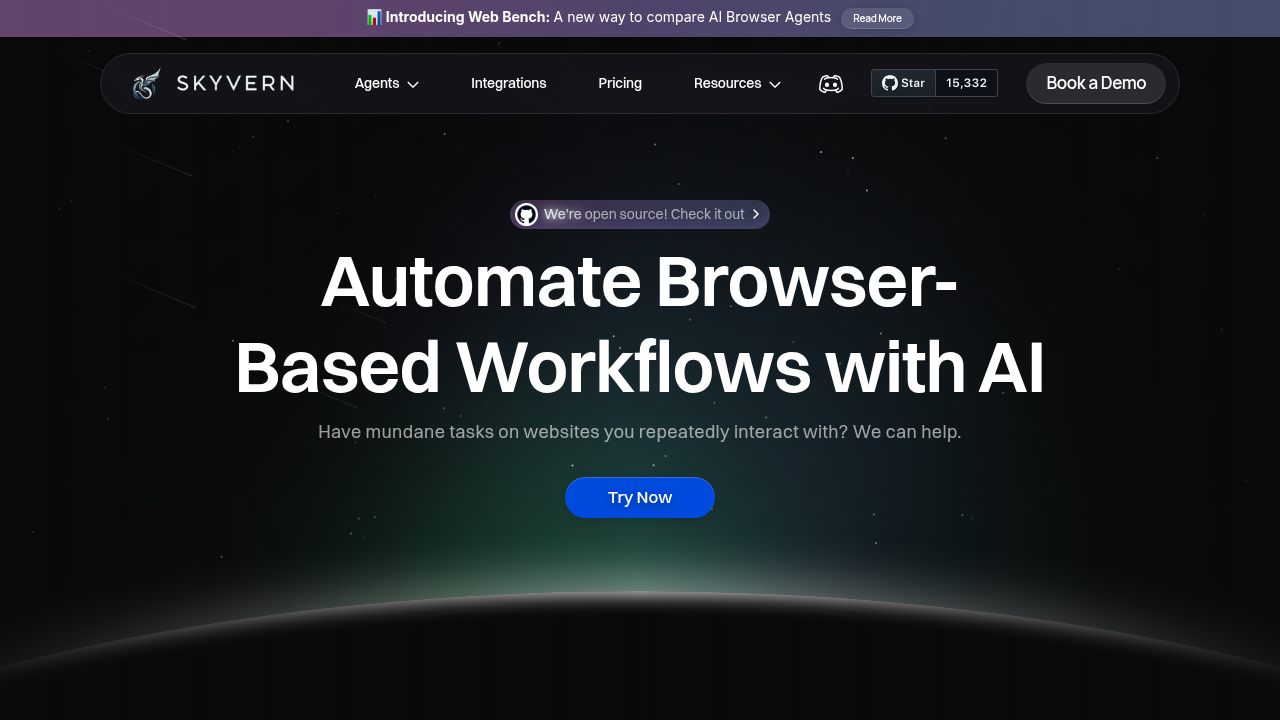
Enterprises face a fundamental problem: authentication bottlenecks kill automation ROI. When you need to automate workflows across dozens of vendor portals, each requiring 2FA, traditional tools force you to choose between manual intervention or complex workarounds.
Skyvern handles 2FA automation through native TOTP support and AI-powered authentication that adapts to different security implementations. The system uses computer vision and LLMs to understand and navigate authentication screens without hardcoded selectors for each flow. Its 85.8% score on WebVoyager benchmarks reflects real-world performance on complex workflows involving authentication, form filling, and file downloads.
You can deploy a single workflow across multiple vendor portals with different 2FA setups without writing site-specific code. The system interprets QR codes, processes authenticator app prompts, and manages multi-step verification sequences without breaking when websites redesign their login pages.
Enterprise teams get integrated proxy networks for geographic authentication requirements, explainable AI that provides audit trails for compliance, and built-in CAPTCHA solving. The system supports multiple authentication methods simultaneously, switching between SMS codes, authenticator apps, and backup codes as needed.
UiPath
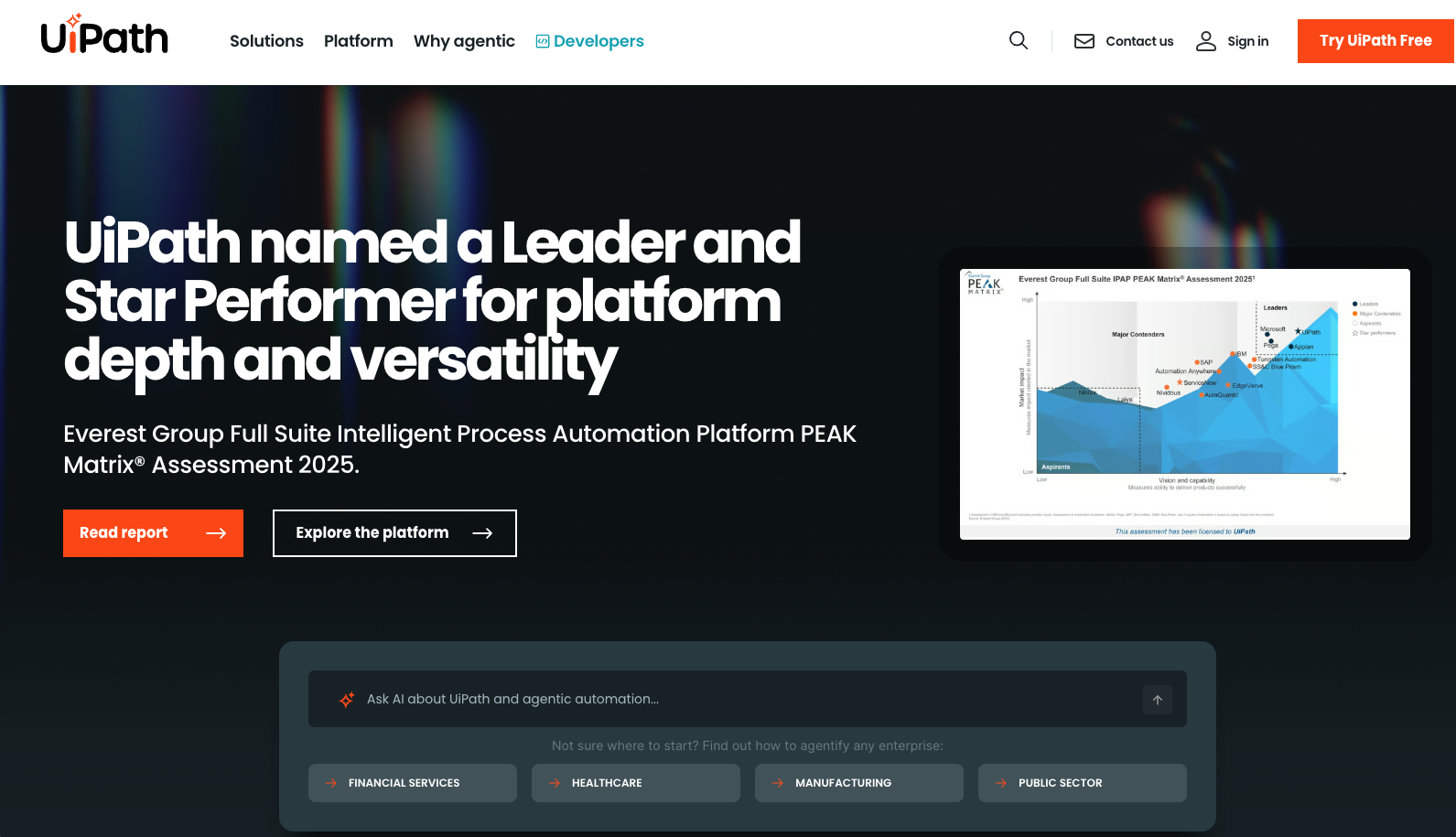
UiPath offers activities that sync with authenticator apps like Microsoft, Google, and Okta to generate one-time passcodes. This enterprise RPA solution handles authentication automation for large organizations with complex workflow orchestration needs.
Key Features
UiPath includes a number of features useful in 2FA automation use cases:
- TOTP generation activities for major authenticator apps
- Email OTP handling with provider-specific integrations
- Centralized credential management through Orchestrator
- Enterprise workflow orchestration capabilities
The Downsides
Some hosts don't display the secret code to users, and without it UiPath cannot generate the OTP. This creates gaps in 2FA coverage when websites don't expose necessary authentication secrets during setup.
The Bottom Line
UiPath works well for enterprise RPA scenarios but faces limitations when websites restrict access to authentication secrets required for TOTP generation. UiPath is good for large enterprises with existing RPA infrastructure who need structured 2FA automation within existing workflow frameworks.
Playwright

Playwright automation scripts can log into websites with time-based one-time password authentication through programmatic TOTP generation using libraries like OTPAuth. You'll need to write custom code to handle authentication flows.
Key Features
Playwright includes a number of features useful in 2FA automation use cases:
- Manual TOTP implementation using OTPAuth libraries
- Cross-browser automation capabilities
- JavaScript execution and dynamic content handling
- Code generation features for rapid development
The Downsides
You must manually extract authentication secrets by clicking "enter this text code" during setup to view the plain text version. This creates additional overhead and potential security risks when managing secrets across multiple sites. With 57.8% of MFA adoption globally happening through authenticator applications, manual TOTP implementation becomes a significant scaling challenge.
The Bottom Line
Playwright requires custom development work for 2FA automation and manual secret management that doesn't scale across enterprise environments. Playwright is good for developer teams comfortable with coding custom 2FA solutions and maintaining authentication secrets programmatically.
testRigor
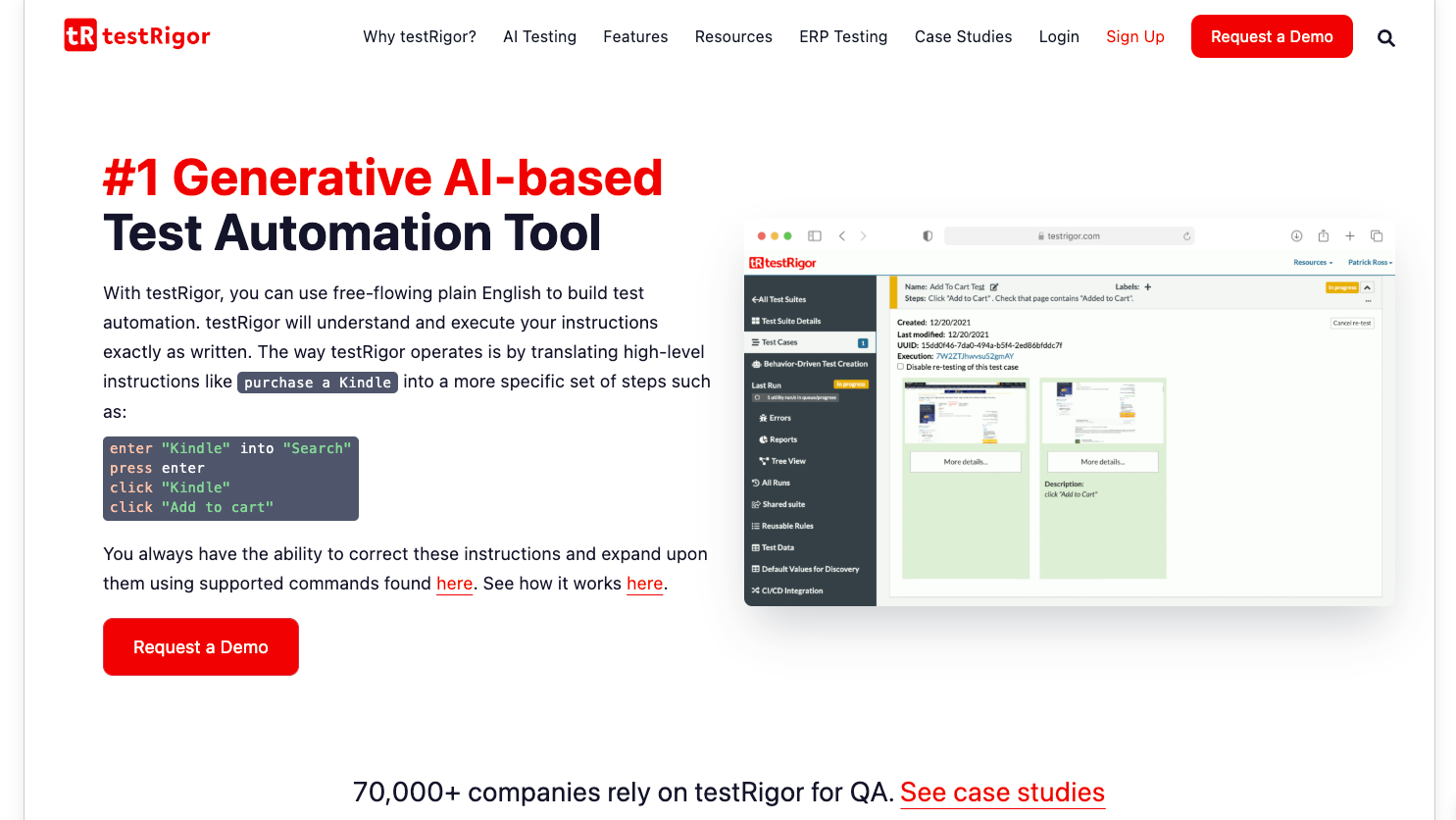
testRigor supports 2FA login with OTPs generated through the Google Authenticator app using simple commands. This no-code testing tool provides basic authentication automation for quality assurance workflows.
Key Features
testRigor includes a number of features useful in 2FA automation use cases:
- Simple TOTP integration commands for validating 2FA scenarios with OTPs sent via email, phone calls, or text messages
- Natural language test creation for building authentication tests without coding
- Cross-browser testing capabilities and file upload/download automation
The Downsides
Lacks sophisticated authentication handling for complex enterprise scenarios involving multiple authentication factors or custom implementations.
The Bottom Line
testRigor offers straightforward 2FA testing but cannot handle complex authentication workflows required for enterprise automation. This is good for QA teams needing basic 2FA testing without complex authentication workflows or enterprise security requirements.
Browse AI
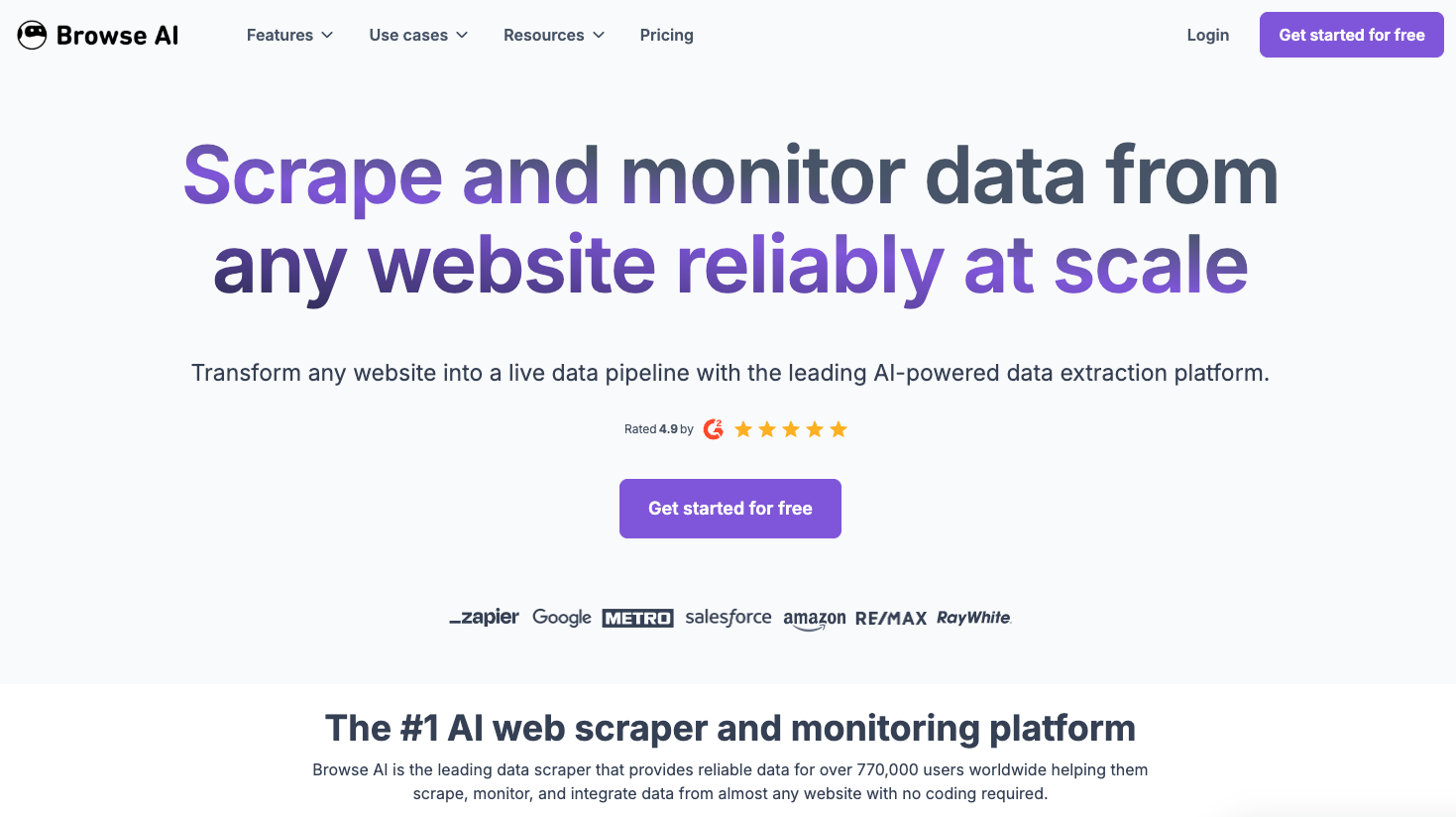
Browse AI handles no-code web scraping and data monitoring with basic authentication support. Users can build automated robots for data collection without writing code.
Key Features
Browse AI includes a number of features useful in 2FA automation use cases:
- No-code robot training for extracting data from websites
- Website monitoring that detects changes over time
- Basic authentication support for simple username and password logins
- Integration options with workflow automation tools
The Downsides
Browse AI doesn't support TOTP generation or handle sophisticated multi-factor authentication flows required in secure enterprise environments.
The Bottom Line
Works for basic scraping but can't meet enterprise 2FA automation needs. Browse AI is good for straightforward data collection tasks that only need basic login authentication without complex 2FA.
Axiom
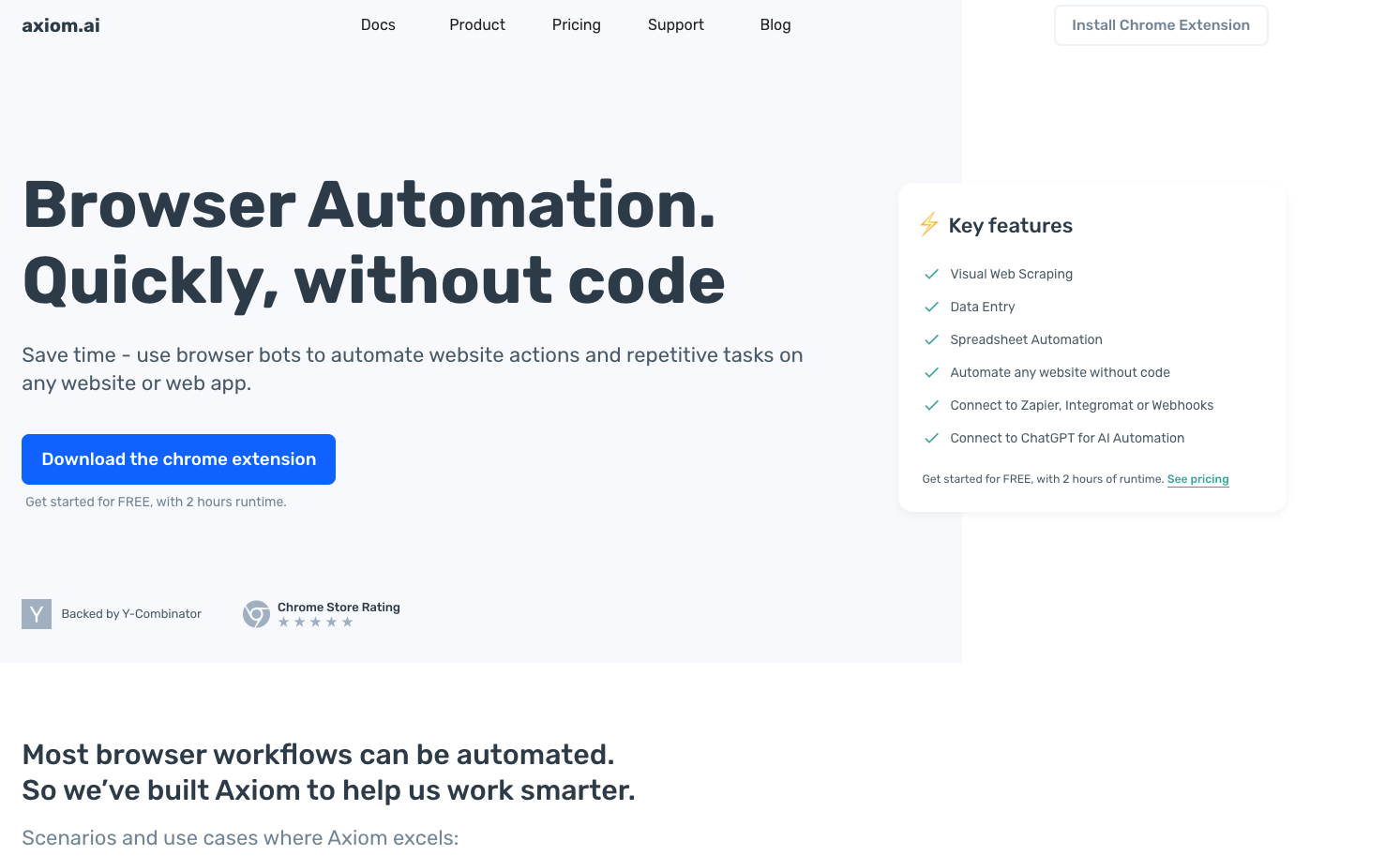
Axiom is a browser automation tool built on the Puppeteer framework that automates actions like clicking and typing through a Chrome extension interface.
Key Features
Axiom includes a number of features useful in 2FA automation use cases:
- No-code browser bot creation through Chrome extension
- Integration with Zapier and Make for workflow connections
- Template library for common automation tasks
The Downsides
Axiom lacks native 2FA support and cannot handle TOTP generation or complex authentication workflows.
The Bottom Line
Axiom offers accessible no-code automation but cannot meet enterprise 2FA automation requirements. It's good for non-technical users needing simple browser automation without coding requirements or complex authentication scenarios.
Feature Comparison Table of 2FA-Compatible Browser Automation Tools
Feature | Skyvern | UiPath | Playwright | testRigor | Browse AI | Axiom |
|---|---|---|---|---|---|---|
Native TOTP Support | ✅ Built-in | ✅ Activity suite | ❌ Manual coding | ✅ Simple commands | ❌ Not supported | ❌ Not supported |
QR Code Handling | ✅ Computer vision | ❌ Manual setup | ❌ Manual coding | ❌ Manual setup | ❌ Not supported | ❌ Not supported |
Enterprise Security | ✅ Full suite | ✅ Orchestrator | ⚠️ Custom implementation | ⚠️ Basic | ❌ Limited | ❌ Basic |
Multi-step Authentication | ✅ AI-powered | ✅ Workflow-based | ⚠️ Manual coding | ⚠️ Limited | ❌ Not supported | ❌ Not supported |
Proxy Integration | ✅ Built-in | ⚠️ Third-party | ⚠️ Manual setup | ❌ Not supported | ❌ Not supported | ❌ Not supported |
CAPTCHA Handling | ✅ Automated | ⚠️ Third-party | ❌ Manual coding | ❌ Not supported | ❌ Not supported | ❌ Not supported |
No-Code Interface | ✅ API + Chat | ⚠️ Studio required | ❌ Code-based | ✅ Natural language | ✅ Visual interface | ✅ Chrome extension |
FAQ
How do I implement 2FA automation without breaking when websites change their login screens?
Choose tools with computer vision and AI capabilities that interpret authentication screens dynamically instead of relying on hardcoded selectors. This approach adapts to website redesigns automatically without requiring manual updates to your automation scripts.
What's the main difference between native TOTP support and manual implementation?
Native TOTP support provides built-in authentication handling through simple API calls, while manual implementation requires you to extract secrets, write custom code, and maintain authentication logic for each website separately.
When should I consider switching from traditional automation tools for 2FA workflows?
If you're managing authentication across more than 10 websites with different 2FA implementations, or spending a lot of time maintaining broken automation scripts after website updates, you need a solution designed for multi-site authentication at scale.
Can browser automation tools handle multiple authentication methods simultaneously?
Advanced tools can switch between SMS codes, authenticator apps, and backup codes as needed, while basic automation solutions typically support only one authentication method and require separate configurations for different security implementations.
Why do some automation tools fail with certain 2FA implementations?
Many tools require access to authentication secrets that some websites don't expose to users during setup, creating coverage gaps where automation becomes impossible without manual intervention or workarounds.
Final thoughts on browser automation with two-factor authentication
The best TOTP browser automation adapts to different security setups without site-specific configuration. Your automation shouldn't break every time a vendor redesigns their login page. Skyvern's AI interprets authentication flows automatically, so you can scale across multiple portals without the maintenance headache.

